As we all continue to try to stay healthy, vitamin C—an essential nutrient for immune system health, body tissue maintenance, and a host of other benefits—should continue to be part of your diet. In fact, it is recommended that women consume 70 mg of vitamin C per day or 96 mg for men. We all know some of the obvious sources of this antioxidant, but some foods are surprisingly high in vitamin C, while others might surprise you just by appearing on this list at all. Here are the 20 foods highest in vitamin C.
Acerola cherries
You might not come across acerola cherries—also known as Barbados cherries, West Indian cherries, or wild crepe myrtles—very often, but they’re worth including in this list for their shockingly high levels of vitamin C. (We left some other uber-exotic foods off this list, but this one is common enough to include.) In addition to containing about 1,600 mg of vitamin C per 100 grams (yikes!), Acerola cherries also feature vitamin A, numerous B-vitamins, and multiple other antioxidants.
Bell peppers
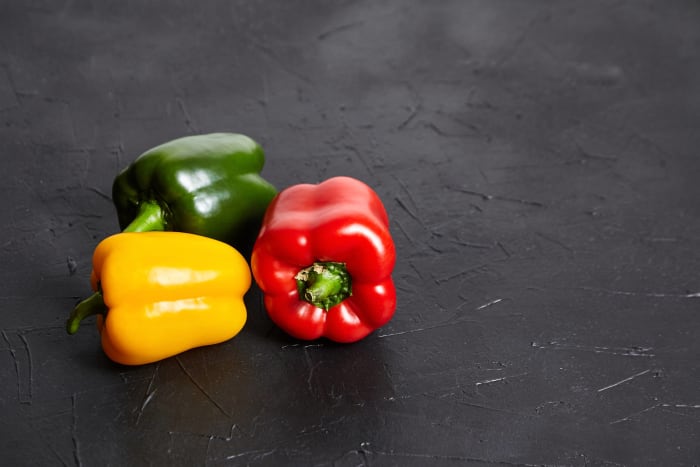
Not all bell peppers are created equal. They’re all packed with vitamin C, but in dramatically different levels based on the color. Green peppers have about 95 mg each, red peppers have 152 mg, but yellow peppers easily take the crown with an astonishing 341 mg.
Blackcurrants
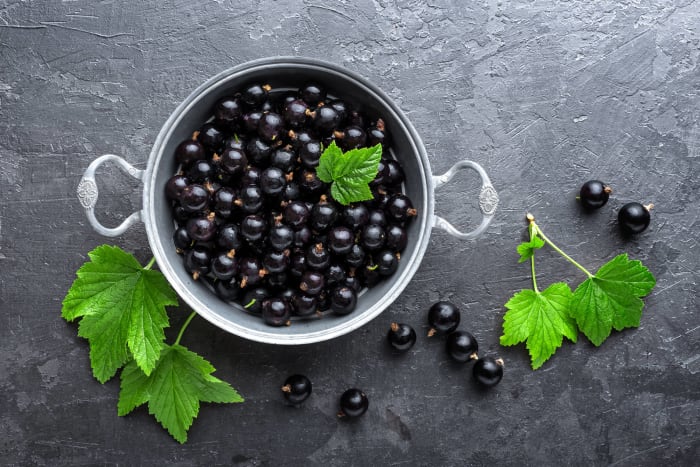
You only need a half-cup of blackcurrants, which clocks in at 101 mg of vitamin C, to meet and exceed your daily requirement. That’s good news considering the fact that few people eat these tart berries raw, and instead tend to have them in smaller servings of jellies, jams, and preserves.
Broccoli

One cup of cooked broccoli provides more than 100 mg of vitamin C, which meets and exceeds the daily recommendations for both men and women. The next time we have a cold, we’ll pass on chicken soup in favor of some broccoli cheddar!
Brussels sprouts
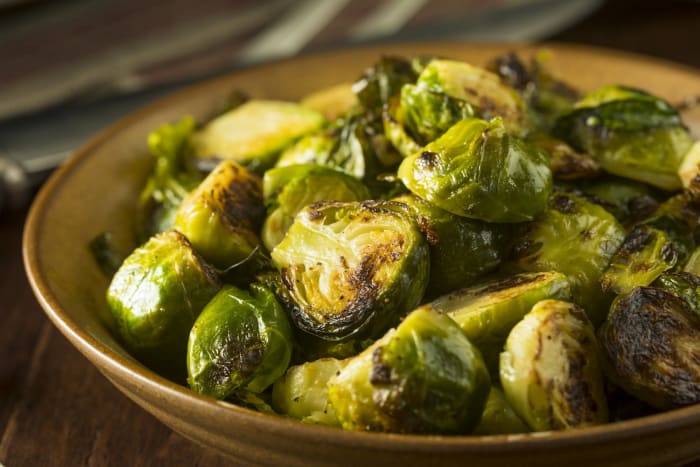
Like broccoli, we also hated Brussels sprouts in our youth. We now think both of these veggies are great, and as mom always said, they are both great for you. In fact, a half-cup serving of broccoli has roughly the same amount of vitamin C as the same serving of Brussels sprouts: about 50 mg. The latter also contains fiber, potassium, and vitamins A and K.
Cantaloupe

Cantaloupe is sometimes cast aside as a filler fruit in fruit salads, but it tastes great and is actually very good for you. One cup of cut or balled cantaloupe contains about 65 mg of vitamin C, which is basically all you need for the day. It also fulfills your daily vitamin A requirements, and packs some potassium, too!
Cauliflower

Broccoli, Brussels sprouts, and cauliflower are all different strains of the same plant species, so it makes sense that all three would appear in this list. And with a cup of cauliflower providing more than 50 mg of vitamin C, it also makes sense that people are using cauliflower for everything from rice to pizza crust.
Chili peppers
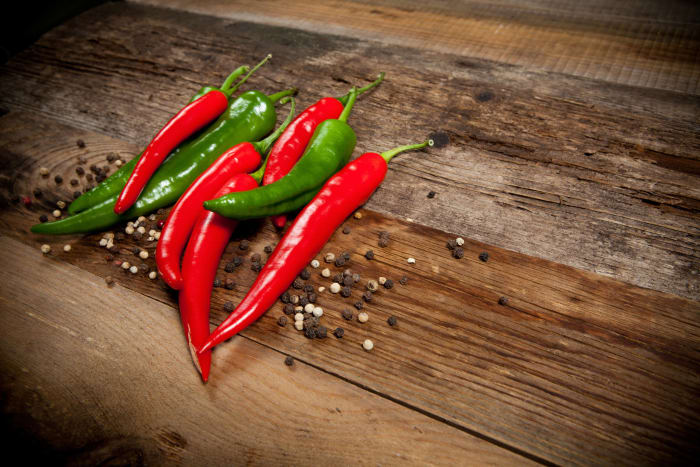
Red hot chili peppers aren’t just a tasty go-to ingredient for Mexican food (and the namesake for an awesome alternative band) they’re also a solid source of vitamin C. Green chili peppers have even more vitamin C—a staggering 109 mg per pepper compared to the red variety’s 65 mg.
Guava
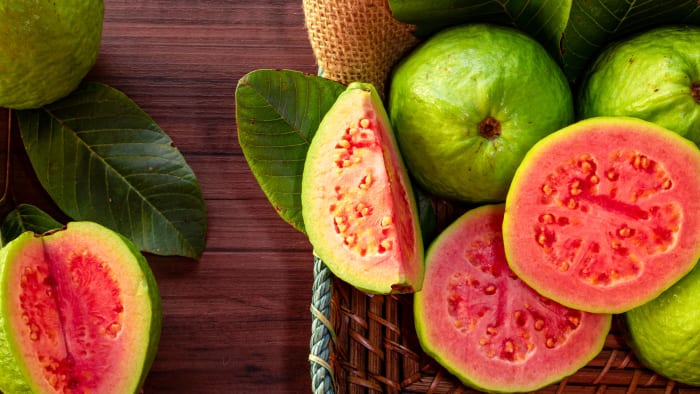
Guava is a bonafide superfood, boasting numerous antioxidants as well as copper, folic acid, manganese, potassium, and vitamins A and C. And it’s not just a bit of vitamin C—one guava possesses about 125 mg!!
Kale

One cup of kale contains about as much vitamin C as an orange. There aren’t many other similarities between these foods, as oranges are sweet and delicious right off the tree, while kale can be bitter and sometimes requires other foods to cover up its taste. (We can’t be the only ones secretly sneaking it into smoothies.)
Kiwis

Despite being a relatively small fruit, kiwis contain a big dose of vitamin C. One kiwi has about 64 mg, which is nearly the entire daily requirement for women and two-thirds of the requirement for men. Kiwis also help with digestion thanks to their fiber content.
Lemons

One whole lemon contains 83 mg of vitamin C, which is about what you need in a day. However, we don’t know many people who eat entire lemons, including the peels, so this information isn’t particularly useful. (Unless you’re a desperate sailor staving off scurvy; lemons were a popular prevention method back in the 1700s.) Instead of eating it whole, you could drink the juice and at least get some benefit (about 42 mg per half-cup).
Lychee
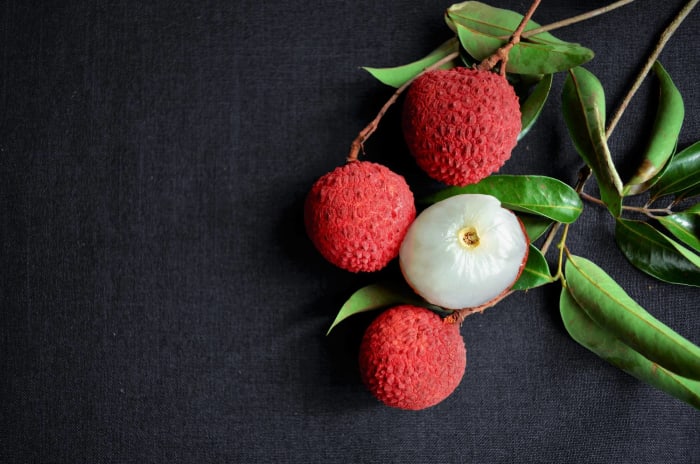
Consider adding lychees to your next smoothie, juice, salad, or jelly batch, as each one contains about 7 mg of vitamin C. That’s not a lot on its own, but lychees are quite small and have a large stone inside, so it’s easy to consume a half-cup serving, which contains about 68 mg of vitamin C.
Mango

Man, we love mango. It’s tasty, it transports us to a tropical place, and it’s a healthy snack, too. Mangoes are said to be good for digestion, they contain both potassium and magnesium, and they boast a significant amount of vitamin C. A whole mango has roughly 122 mg of vitamin C, which means you can split one with a spouse or friend and still get all you need for the day.
Oranges

In the least surprising statement of this entire slideshow: oranges are high in vitamin C. “How high?” you might ask. The average orange contains 70 mg, and an 8-ounce glass of orange juice has more than 100 mg!
Papaya

Sensing a theme with tropical fruits? Papaya isn’t bucking any trends here, as it also provides some vitamin C power. One cup of papaya packs 87 mg of vitamin C—one day’s worth of the nutrient for men, and more than enough for women. One small papaya also features about 3 grams of fiber per fruit.
Peas

Peas are an excellent source of vitamin C—specifically the sugar snap pea and snow pea varieties. You can expect about 60 mg of vitamin C per cup of either kind, so pass the peas, please.
Potatoes

Don’t let anyone tell you potatoes are just empty calories. Deep-frying potatoes (and anything else) adds empty calories, but the tubers themselves contain fiber, potassium, vitamin B6, and about 42 mg of vitamin C in one medium-sized potato. We’re not going to call fries a meal, but that’s also not going to stop us from having them for dinner tonight.
Rose hip
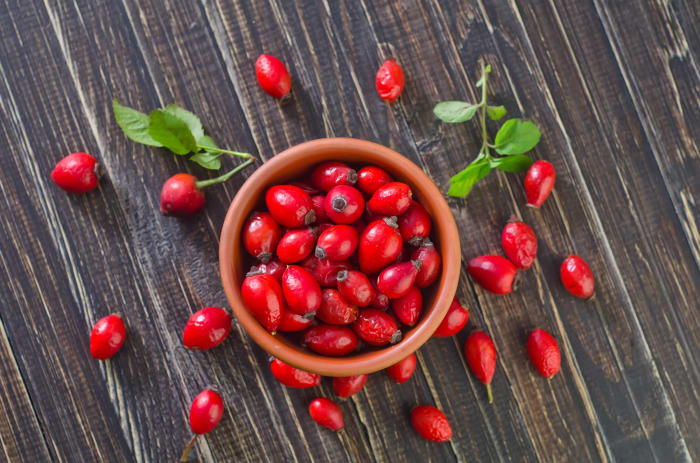
Yes, you can actually eat rose hips raw, but we prefer them in cakes, pies, jams, and syrups. They’re sweet and tangy and an excellent way to add vitamin C to your diet, with four or five of these grape-sized fruits providing your daily requirement.

No comments:
Post a Comment